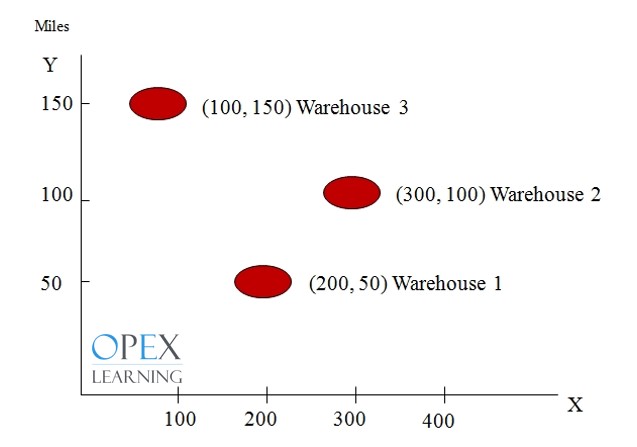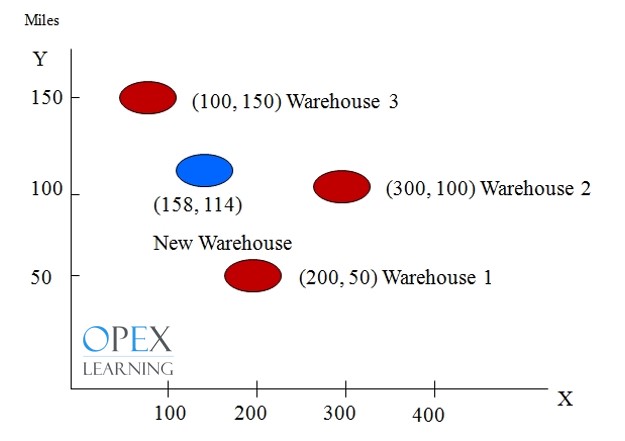One has to ask What, Where, and How when it comes to your warehousing strategy. Or another hot area to consider in build-to-order fulfillment is the explosion of 3D Printing Companies.
There are at least 3 critical items that allow you to reduce costs and increase service level in warehousing:
- Tight and Necessary Warehousing Processes
- What Warehouse Metrics do you have in place to help you determine if your processes are going well or not.
- You warehouse location is optimal in the first place to meet service level commitments.
- These together will help you reduce costs in your warehouse.
Where to build a distribution center, fulfillment center, or warehouse is a strategic question. The answer to “where” are drivers to costs and the customer experience. Where to build your next warehouse is an incredibly important question to answer. After you answer the “where” question, then we need to discuss what warehouse processes and warehouse metrics ought you establish.
There are, of course, many factors to consider:
- What is your expected inventory profile?
- What is your geographic distribution strategy?
- State and Municipalities incentives? State and Local Government Incentives?
- Proximity to the Logistics Carrier (such as UPS World Hub or Ground Transport)
- The pool of local talent available in the area.
- Inbound and Outbound transportation costs.
- Access to interstate highway systems or inbound sea import locations.
- Crime rate, Housing, Educational Facilities
- State Taxes, Nexus
- Building construction codes and zoning restrictions
The above are important criteria and should be considered. A popular technique for selecting a new facility location based on different weighted criteria is the prioritization matrix.
But, to answer the question of “where”, also requires a more quantitative approach that should be used in concert with the above considerations. One common approach to identifying where to build the next single fulfillment center location is a method called the Center of Gravity Method.
Center of Gravity Method
The Center of Gravity Method is an approach that seeks to compute geographic coordinates for a potential single new facility that will minimize costs. It’s an approach where the main inputs that it considers are the following:
- Markets
- Volume of goods shipped
- Shipping costs
This method is beneficial because it’s (1) Simple to compute, (2) Considers existing facilities, (3) and Minimizes costs.
How To Use Center of Gravity Method
Step 1:
- Place existing warehouse, fulfillment center, and distribution center locations in a coordinate grid.
- Place the grid on an ordinary map.
- The relative distances must be noted.
Step 2:
Then, using the equations below,
- Cx= ∑ dix Vi/ ∑ Vi
- Cy= ∑ diy Vi/ ∑ Vi
We calculate the X and Y coordinates using these equations where Cx is the X (horizontal axis) coordinate for the new facility. Cy is the Y (vertical axis) coordinate for the new facility, dix is the X coordinate of the existing location, diy is the Y coordinate of the existing location, and Vi is the volume of goods moved to or from the ith location.
Step 3:
Once you have obtained the X and Y coordinates place that location on the map.
But, it doesn’t end there. As I mention earlier, there are other factors to consider. What this method allows is a point of departure – or, literally, a starting point of where (from the perspective of longitude and latitude) you options are for where to grow your fulfillment or logistics network.
Center of Gravity Example
Let’s suppose your company wants to expand its logistics network and locate a facility within a network of three existing facilities. Given the following assumptions below, what are the coordinates for the new potential location?
Let’s assume the following:
- Warehouse 1 has a daily outbound goods volume of 2,500 units
- Warehouse 2 has a daily outbound goods volume of 1,300 units
- Warehouse 3 has a daily outbound goods volume of 5,000 units
And the current coordinates of the existing facilities:

Given the assumptions and grid coordinates above, we get the following:
- d1x= 200
- d2x= 300
- d3x= 100
- d1y= 50
- d2y= 100
- d3y= 150
And,
- V1= 2,500
- V2= 1,300
- V3= 5,000
Which gives us,
- Cx= (200 x 2,500) + (300 x 1,300) + (100 x 5,000) / (2,500 + 1,300 + 5,000) = 158
- Cy= (50 x 2,500) + (100 x 1,300) + (150 x 5,000) / (2,500 + 1,300 + 5,000) = 114
If we were to plot the new suggested warehouse coordinates on the grid, we would get:

Of course the discussion doesn’t end here. Once a coordinate or several are identified given the current logistics network context, then other factors must be considered. This is just the beginning – a point of departure.








nice under standing like it thanks to this site
Impressive work from your team
Nicko conner says hello and thank you